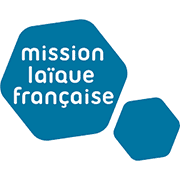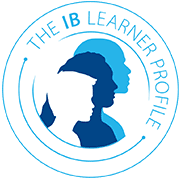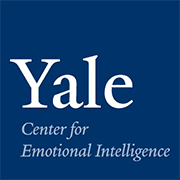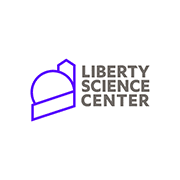Curriculum
An Education Based on International Best Practices
An Education Based on International Best Practices
BILINGUALISM. EXCELLENCE. HAPPINESS.
In a globalized world, where multicultural understanding is a major asset, Tessa International School prepares its students to become bilingual, adaptable and active citizens. Children benefit not only from full immersion in a second language, but also from being constantly challenged, so that they are used to and enjoy giving their best.
Learn more about the benefits of bilingualism here.
Tessa’s curriculum has been built on the principle of incorporating some of the world’s best practices in education. As a member of the Mission Laique Française, we merge the official French curriculum to the International Baccalaureate approach. International Baccalaureate (IB) programs aim to do more than other curricula by encouraging the development of inquiring, knowledgeable and caring young people who are motivated to succeed.





At Tessa, the development of the child is as much about the academic challenge as it is about the social and emotional evolution. Following the Yale Center of Emotional Intelligence approach, we recognize the individual needs, abilities, and interests of our students and are committed to developing the whole child in a fun and engaging environment.
The Primary Years Program at Tessa is structured around six transdisciplinary themes that are developed into our Program of Inquiry. These units integrate the following subject areas and provide meaningful learning experiences for students.
Language / Literacy
At Tessa, we follow the Scope and Sequence for Language laid out by the International Baccalaureate Organization’s (IBO) Primary Years Program (PYP). This means that structured, purposeful inquiry is our main approach to teaching and learning language. Wherever possible, language is taught through the relevant and authentic context of the transdisciplinary program of inquiry.
In addition to this approach, we follow the Cycle 1 standards of the French National Curriculum, “Mobilize Language in All Its Dimensions”.
Oral Language
By the end of 1st grade, the students will be able to use language to explain, inquire, compare, address needs, feelings and opinions. They will be able to follow most grammatical rules and recognize patterns.
Drama, spoken texts, poems and presentations are tools we use to help our students develop listening, expression and understanding skills. They learn how to memorize but also how to produce a story.
Being immersed in a second language, our students hear and appreciate differences between languages, and are able to switch from one another with very few errors.
Visual Language
By the end of 1st grade, the students will be able to observe and discuss visual presentations, make suggestions, relate to different contexts, talk about their own feelings. They will develop their evaluation skills, be able to identify, describe, make connections.
They learn to realize that shapes, symbols and colors have meaning, and include them in presentations.
Written Language – Writing
The students will learn how to write to communicate a message to a particular audience. They begin to enjoy writing and are introduced to cursive in Pre-K4, while by the end of 1st grade, they will be able to copy words and sentences in cursive and script.
They learn to decode 1-to-1 letter-sound and make correspondences. The will be able to describe, explain and express feelings, opinions, all while using correct spelling of words, grammar and punctuation.
We are using a variety of digital tools to teach them how to produce and publish writing. They also learn how to use a dictionary and participate in projects such as shared writing to enhance their skills and creativity.
Written Language – Reading
By the end of 1st grade, the students will be able to develop personal preferences, selecting books for pleasure and information, be able to read, and analyze what they read. They learn how to discuss characters’ behaviors and personality, and realize the difference between fiction and non-fiction.
They also learn about the organization of a book, and the different text types that exist.
Mathematics
At Tessa, we follow the Scope and Sequence for Mathematics laid out by the International Baccalaureate Organization’s (IBO) Primary Years Program (PYP). This means that structured, purposeful inquiry is our main approach to teaching and learning mathematics. Wherever possible, math is taught through the relevant and authentic context of the transdisciplinary program of inquiry.
In addition to this approach, we follow the Cycle 1 standards of the French National Curriculum, Building the First Tools to Structure One’s Thinking and Explore the World.
Numbers
The students first learn how to use the language of mathematics. By the end of 1st grade, they will be able to use whole numbers up to hundreds and beyond, read and write these numbers, model them by using the base 10 place values system, and count.
They learn to understand how numbers work, how to connect them. In 1st grade they begin to estimate quantities and differences, they relate counting to addition and subtraction, they start learning multiplication tables and solve problems.
Shape and Space
By the end of 1st grade, students will know how to describe objects in the environment, using names of shapes, and describe the relative positions of these objects. They will learn how to create, interpret directions, describe paths, positions, boundaries.
Pattern and Function
Using words, drawings, symbols, materials, actions and numbers, students will be able to represent different types of patterns. They will apply properties of addition for addition and subtraction.
Data Handling
By the end of 1st grade, our students will be able to collect and represent data in different types of graphs. They will understand that information about one’s self and one’s surroundings can be collected and recorded in different ways. Our students learn to identify change in daily events, and how to express this in words. They can classify objects in categories and counts the number of objects in each category.
Measurement
The students learn how to read and write the time, estimate and compare lengths of time, identify events of the day. By the end of 1st grade, they will know how describe measurable attributes of objects, such as length or weight, how to compare two objects, and how to use standard units and tools of measurement.
Through real-life situation exercises, our students will learn how to measure time, estimate values using Euro and American currency. These skills will enhance their problem-solving capacities.
Science
At Tessa, science is viewed as an exploration of biological, chemical and physical aspects of our world around us, and the
relationships between and among them.
One unit per year, How the World Works, is focused on science; the other transdisciplinary units have activities related to science. For instance, in the Unit, Sharing the Planet, students often have to understand scientific principles related to ecology in order to participate fully in the unit.
In addition, once per week, Liberty Science Center comes to Tessa for an Enrichment class.
Social Studies
At Tessa, social studies learning guides students towards a deeper understanding of themselves and others, and of their place in an increasingly global society. It offers opportunities for students to ponder and wonder about human behavior and activity in a realistic, objective, and objective way. Exposure to and experience with social studies should open doors to key questions about life and learning.
The majority of our Units of Inquiry are focused on topics related to social studies: Who We Are, How We Organize Ourselves, Where We Are in Place and Time, and Sharing the Planet.
Social / Emotional Learning
Emotional Development is a key element at Tessa International School. Our program helps students manage their emotions, cultivate caring relationships and resolve conflicts which increase social and emotional understanding.
Children are:
• Encouraged to express their thoughts, feelings in a calm and suitable setting.
• Learning about community and its values.
• Using their words, listening to one another and respecting peers.
• Learning to solve problems.
• Developing conversational skills.
• Encouraged to share with peers.

There are three parts of RULER that Tessa teachers regularly use:
1. The Charter
The Charter is a kind of guide that helps both children and adults remember how they (1) want to feel and (2) the behaviors they can
regularly engage in to support these feelings in the classroom. This works in concert with the Essential Agreements the teachers establish in the classroom with the students at the beginning of the year.
2. The Mood Meter
The Mood Meter is a tool that teachers use to guide children toward concrete thoughts about emotions. It helps children learn to recognize
their feelings. The Mood Meter is composed of four different colored squares that each symbolizes a type of feeling. Each morning the teachers at Tessa talk to all their students about their moods. Teachers also read books related to moods and occasionally, homework assignments are given to children to share personal stories with their families.
In addition, beginning at the Kindergarten level, Tessa students regularly reflect on their growth regarding the IB Learner Profile in concert with the Mood Meter.
3. The Meta-Moment
The Meta-Moment is a way to help students manage their motions.
Essentially, it is a strategy for children to help calm themselves down
by thinking about ‘their ideal self’ during critical moments. It is a
way to create positive moments out of difficult situations.
Music
Music is an essential part of the French National Curriculum and a part of the Arts under the Primary Years Program. Music at Tessa exemplifies learning through inquiry because of the emphasis on, and the nature of, the creative process. All classes incorporate music throughout the day and, whenever possible, directly in line with the Unit of Inquiry.
In addition, Tone Music Academy comes once a week teaching by way of the Suzuki Method.
The Suzuki Method is based on “Mother-Tongue” learning. Just as children grow up knowing the language spoken to them in infancy, an early, carefully guided immersion in music imparts the language of sound.
Additionally, as children are taught to talk before they read, so does the Suzuki student learn to master the techniques and concepts of music before they are challenged by learning how to read written music. Tone Academy’s classes at Tessa introduce the building blocks of broader musicianship, theory and improvisation that will prepare students for their eventual learning of a specific instrument.
The goal from the very first day is to foster a deep love and appreciation for music. Through positive reinforcement and the constant support of instructors and parents, each child is given the opportunity to explore and grow at their own pace.
Visual Arts
Visual Arts is an essential part of the French National Curriculum and an elementary of the Arts under the Primary Years Program. Visual Arts at Tessa exemplify learning through inquiry because of the emphasis on, and the nature of, the creative process.
All classes incorporate the visual arts throughout the day and, whenever possible, directly in line with the Unit of Inquiry.
Two common strands are used in the arts at Tessa: Responding and Creating.
Responding:
The process of responding provides students with opportunities to respond to their own and other artists’ works and processes, and in so doing develop the skills of critical analysis, interpretation, evaluation, reflection and communication. Students will demonstrate knowledge and understanding of the concepts, methods and elements of dance, drama, music and visual arts, including using specialized language. Students consider their own and other artists’ works in context and from different perspectives in order to construct meaning and inform their own future works and processes.
Creating:
The process of creating provides students with opportunities to communicate distinctive forms of meaning, develop their technical skills, take creative risks, solve problems and visualize consequences. Students are encouraged to draw on their imagination, experiences and knowledge of materials and processes as starting points for creative exploration. They can make connections between their work and that of other artists to inform their thinking and to provide inspiration. Both independently and collaboratively, students participate in creative processes through which they can communicate ideas and express feelings. The creating strand provides opportunities for students to explore their personal interests, beliefs and values and to engage in a personal artistic journey.
– Source: Arts Scope and Sequence – IBO – Primary Years Program
PSPE
At Tessa, teachers care about students’ well-being through the promotion and development of concepts, knowledge, attitudes and skills that add to well-being. Well-being involves physical, emotional, cognitive, spiritual, and social health and development.
Students participate in activities related to PSPE daily and have a dedicated 40 minutes once per week.
Generally speaking, activities in PSPE can be divided into three categories: Identity, Active Living, and Interactions.
Activities consist of:
• Individual pursuits
• Movement composition
• Games
• Adventure challenges
• Health-related
Naturally, within PSPE classes and other classes within the day, students develop gross and fine motor skills.
Children:
• Develop coordination while walking, jumping, running, throwing, catching and kicking.
• Practice climbing and pedaling.
• Practice running around obstacles.
• Take an active part in team games, cooperate and take initiative.
• Follow rhythms.
• Develop physical flexibility.
• Learn how to focus and concentrate.
• Learn how to breathe and calm down.
Drama
Drama is a vital part of the arts curriculum at Tessa. All teachers incorporate drama throughout their Unit of Inquiry.
Drama explores how we express ourselves physically and vocally.
In creating, students should explore the use of facial expressions, gestures, movement, posture and vocal techniques to convey emotional or cultural meaning to both characters and stories. It is important that students are exposed to a variety of dramatic forms including creative movement, impersonation, improvisation, mask work, mime, musical, role play, pantomime, puppetry, re-enactment, scripted drama, and skit. In responding, students should experience a wide variety of scripts and stories from different times, cultures and places and, where possible, access live theatre performances and presentations. Students should have opportunities to present their creative work to an audience, to witness their peers in performance and through this become critically aware audience members.
In drama, documenting the individual’s learning process is integral. Drama is an active and transitory discipline, thus digitally recording performances or class project work provides both the student and teacher with tools for reflection. Through carefully planned exercises students can creatively explore personal interests and begin to develop their own style. Journal work (whether scrapbook-style or written) illustrating storylines, scriptwriting, set designs and costume choices are indicators of students’ dramatic development and can provide an informative record of their personal creative journey
– Source: Arts Scope and Sequence – IBO – Primary Years Program
